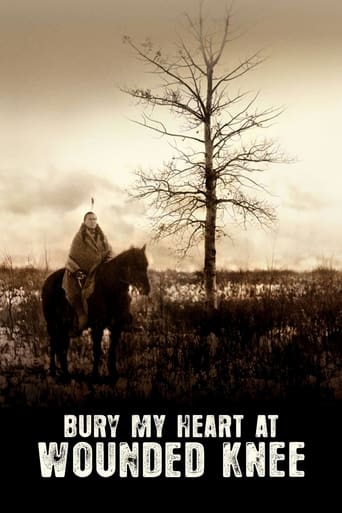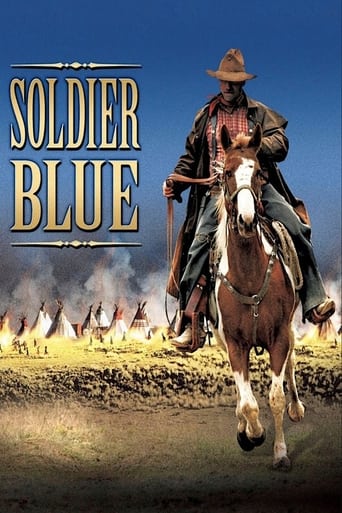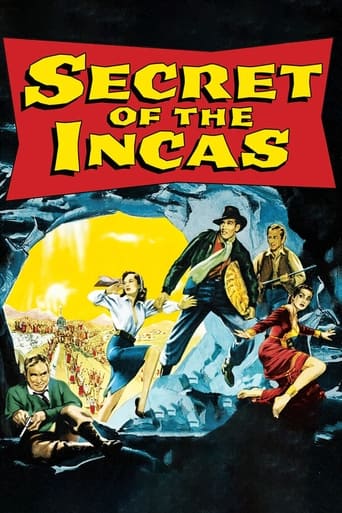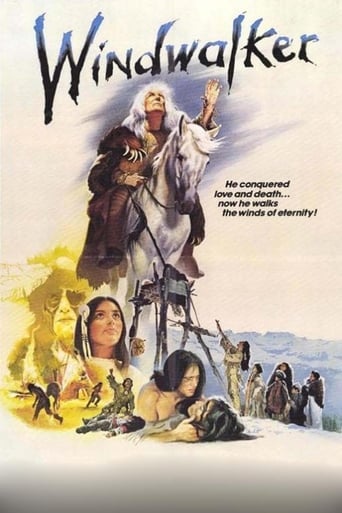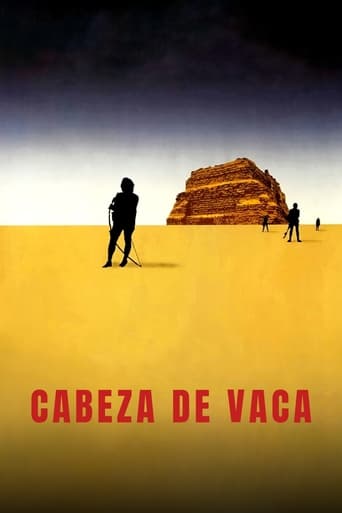

Cabeza de Vaca (1991)
An international award winning saga of old Mexico. In 1528, a Spanish expedition flounders off the coast of Florida with 600 lives lost. One survivor, Alvar Nunez Cabeza de Vaca, roams across the American continent searching for his Spanish comrades. Instead, he discovers the Iguase, an ancient Indian tribe. Over the next eight years, Cabeza de Vaca learns their mystical and mysterious culture, becoming a healer and a leader. But soon this New World collides with the Old World as Spanish conquistadors seek to enslave the Indians, and Cabeza de Vaca must confront his own people and his past.
Watch Trailer
Cast
Similar titles

Reviews
Plenty to Like, Plenty to Dislike
How sad is this?
Admirable film.
Through painfully honest and emotional moments, the movie becomes irresistibly relatable
The conquest of a new world on behalf of the Spanish crown in the 16th century was built on atrocity and deceit, fueled by lies and rumours, greed and ambition. But also failure and anguish. Cabeza de Vaca is one such tale of failure and anguish. Cabeza, acting as the treasurer for Captain Narvaez's expedition, is shipwrecked off the Florida coast and picked on by natives. The historical details of his journey and gruelling subsequent life under capture are skewed though, the movie does not make attempts at historical realism, it goes for the primitive and spiritual. Or this is how it would be if the soldiers on the raft got rid of Aguirre and drifted further downstream to wash up in Herzog's Cobra Verde and become slaves to a shaman and his armless midget helper.The world we're shown is at once horrible and wonderful and director Etchevveria photographs it as both. For big swathes of time the movie is without dialogue and we're crouching on the dirt as the natives perform elaborate rituals that mean nothing to us. The words are lost in the translation but the ceremonial aspect remains. Bodies covered in mud, painted blue and ghastly white, adorned with feathered headpieces, witch doctors making voices and calling out to something, Cabeza de Vaca, both movie and protagonist, observes it all with a half-mad stare and twitching hands.When the survivors of the expedition reach Spanish hands again, one of them exalts the audience with tales of golden cities in the north and shaman potions that give the drinker the sexual prowess of 20 mules. Coronado traveled as far north to New Mexico to discover the 7 Cities of Gold probably on one such impossible tale recounted around the fire by drunken conquistadors desperate to believe. The will to empire is not only the pursuit of the mad and the hopeless, the ambitious and the greedy, but also in itself the result of myth and poetic fabrication, a self-fulfilling prophecy that becomes true by the simple fact it has been pursued. The biggest flaw in the movie is the protagonist. Every time Juan Diego opens his mouth or gesticulates the results are cringeworthy. Manic ferocity came natural to Kinski because he was manic, Diego on the other hand chews scenery like he's playing this for the theater. When he's lost in his own thoughts and acts mad, the results are significantly better.A filthy gaunt figure dressed in rags is climbing on ragged redrock terrain, walls of rock rising on all sides, he can barely traces his steps but there's nowhere to trace them to, he's a strange man lost in a strange violent world that makes no sense - the movie is his anguished cry in the wilderness echoed all around him like the wilderness is crying back at him. The final image is an ecstatic metaphor, like something Herzog would have improvised, and it's a stunning way to close the film.
After watching this movie, I had to do some research on it. I had learned that this was a true story, but I didn't know anything about what it may be about or who the major players were. What I did discover was that this film was somewhat factually wrong. I hated to read that because this was a very powerful film. This was one of the only films that I have ever watched that used less "known" words, and more violence to carry the message. Perhaps violence isn't the best word, but this film was filled with violent images countered with images of faith and healing. Apparently when Vaca returned to Spain, he wrote some letters to the King describing what he had seen during the eight years on the uncharted land. This was the basis for this film, but according to most, this film left out too much, and took rights to other parts of Vaca's adventure. For example, although the long sequence early in the movie showing Cabeza de Vaca's period of slavery to the Indian sorcerer and the armless dwarf is quite interesting to see, there is no corresponding incident in the explorer's writings. Vaca did report on a brief period of enslavement, but that is all. No sorcerer, no dwarf (...damn...). This film is a transitional movie. At first, we are to feel sorry for Vaca and what is happening to him. Watching the dwarf and sorcerer make fun of him and force him to do painful duties. We are made to feel sympathetic for this man that seemingly is loosing strength and mental power daily. Then, we hit the big moment. When Vaca becomes the healer and befriends the Indian, we feel less sympathetic, and for me, more confused. Did Vaca want to leave this place? Near the end, the answer becomes even more shaded. I would think that someone that feels so strongly about a community that he has spent eight years of his life with would do more than just go back and hope that his new 'family' is not captured. Vaca, in this film, took the cheap route. The final scene is a very gripping moment in our history. Vaca is forced to help bring Christianity to this natives. To demolish their world and form of religion and bring in Western civilization. Vaca sees this and cries, but then STILL does nothing. He apparently has the power to bring people to life, but destroy a church is well out of his grasp. The last scene is of enslaved Indians carrying a Christian cross across the desert. This represent the beginning of the end of most of the Indian's beliefs that have been them for thousands of years. The beginning of the corruption and the force to bring certain beliefs to everyone. Very sad ending. Overall, a decent film that still carries a strong message even today. While the cinematography seems choppy at times, it is worth the wait to witness the human destruction near the end. I suggest this to anyone that needs a moment to see the path of 'our' people.Grade: *** out of *****
In a strange and fantastic film, the Spanish explorer Cabeza de Vaca interacts with American Indians before any other Europeans and becomes integrated into their world before he his torn out of it by the arrival of more Spanish.To answer a common question . . . Why does Florida look like Arizona in this film? Because it's not Florida. It's not even supposed to be Florida.The makers of this film (and the makers of this film's packaging) have their facts wrong but their scenery right. Cabeza de Vaca landed in Texas, probably at the site of today's Galveston. That explains the slow-moving, brown water streams and the thick vegetation and mosquitoes. He then walked west or southwest. West Texas and northern Mexico do have semi-desert conditions and modest sized mountains and mesas and some canyons. The real Cabeza de Vaca left Florida on a flimsy raft -- depicted in the film -- hoping to make it to Cuba. Instead, he landed on the Texas gulf coast. I don't know why the filmmakers labeled the landscape as Florida.This film is odd. It is exceptionally slow paced. There is little intelligible dialogue: lots of grunts or dialogue in indigenous languages (but no subtitles). We are as lost as Cabeza de Vaca. This film is from his point of view, and no explanation for his healing powers is offered. Nor do we receive an explanation of the tribal dynamics (some accept him, some enslave him, another seems to wish to execute him).
Utterly fascinating movie that doesn't go for the Hollywood ending (ala "Dances with Wolves"). Purportedly from the diaries of Cabeza de Vaca, a treasurer for Charles the Fifth of Spain, the film goes from the brutal realism of war to a mystical tour of Indian life to the sad reality of Spanish conquest. This film is a must-see.





